LD Systems MAUI 11 Compact Column active PA System – Test report by amazona.de
MAUI? Haven’t we heard that somewhere before? A little over a year ago, LD Systems introduced the “MAUI 28” column system which, according to the manufacturer, quickly became a top seller. This success motivated the developers and designers to market a smaller, compact and yet powerful system in the form of the “MAUI 11”. It is aimed primarily at an audience that does not want to carry heavy loads.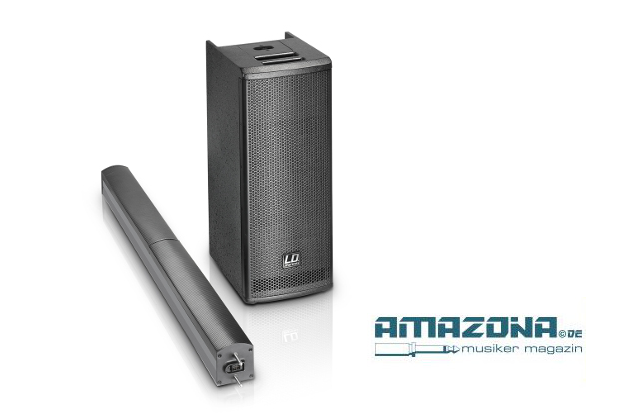
The “MAUI 11” (“MAUI”, by the way, stands for “Multiple Array User Intuitive”) is an active, 2.1 column PA system. It consists of an upright compact subwoofer (17.1 kg) with a mid/high-range column speaker that plugs into the top. The plug-in connection takes the form of two strong metal pins and holds the approx. 1.30 m long, 6.8 kg aluminium column securely in its socket. At the same time, the electrical connections are also established when the parts are plugged together, permitting the amplifier signals to pass unimpeded from the amplifier module in the subwoofer to the column. Without the need for speaker cables, this Plug & Play principle allows for rapid setup, and above all a significant reduction in transport dimensions, since cables and stands are not necessary with the “MAUI 11”. 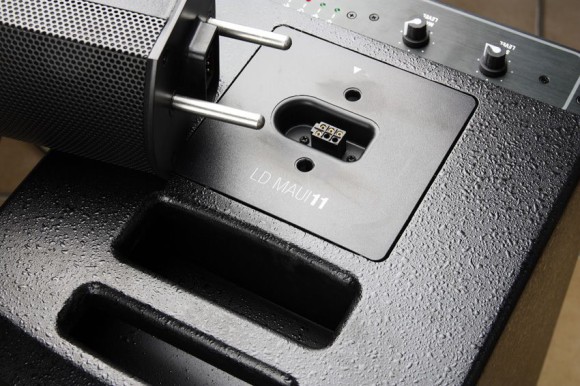
Incidentally, the numbers in the model names MAUI 28 and MAUI 11 refer to the number of built-in speakers. Thus the “MAUI 11” contains a total of eight 3 inch drivers (neodymium), one 1 inch tweeter (neodymium), and two 6.5 inch subwoofers (ferrite).
Although the rather long aluminium loudspeaker column is fairly light, the length could be a issue during transport, even if the nearly square cross-section of 94 x 95 mm (width x depth) is not necessarily overhanging. To the eye, the column appears to be made up of two parts, but really consists of a single unit. In the MAUI 28, this is skilfully resolved with two separate parts.
Concerning the frequency response, the long speaker of the MAUI 11 is divided into three areas. Down below, the mid-range frequencies (180 Hz to 1200 Hz) are transmitted with 70 watts RMS. Above this, is a section with 70 watts RMS dedicated to the upper mids (1200 Hz to 7000 Hz) and a tweeter, which is perched at the top to cover the 7000 Hz to 20 kHz range.
The speaker coverage is probably continuous for aesthetic reasons. With the exception of one below the “middle seam”, all the drivers are set in the upper part.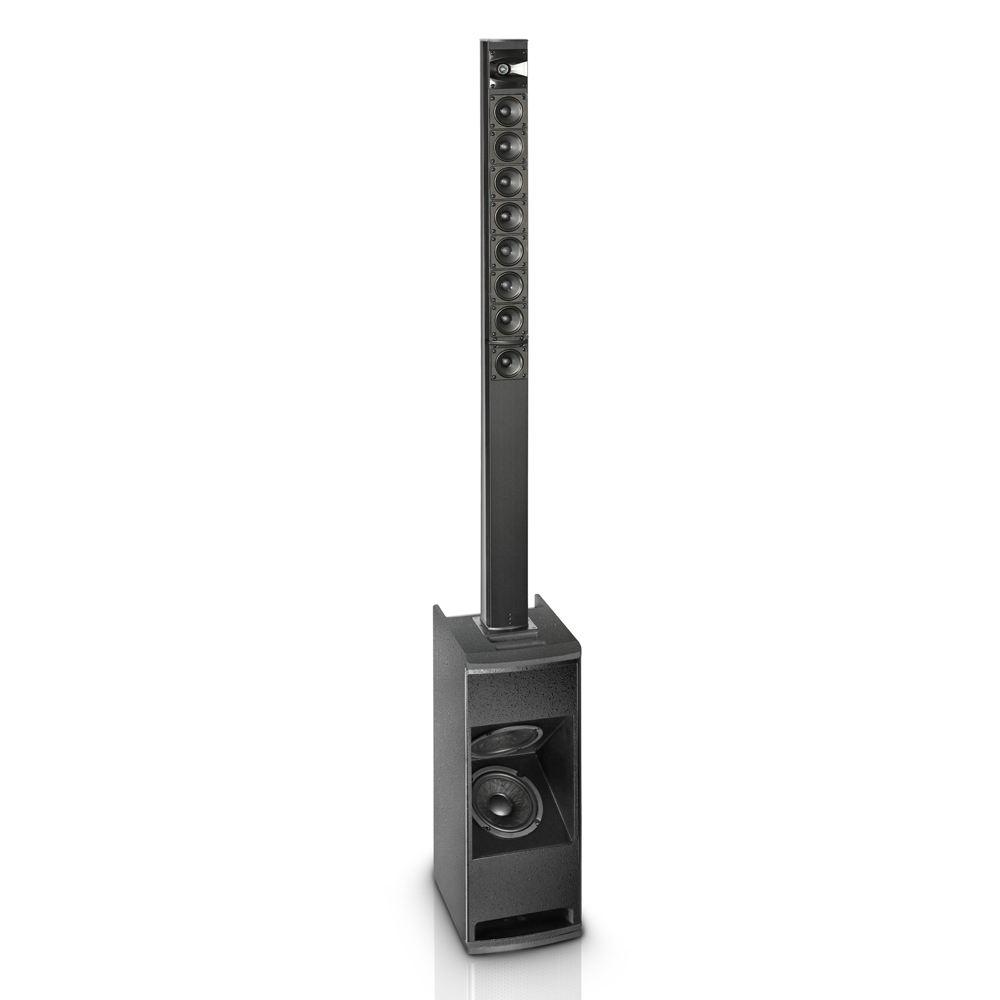
Slimline Subwoofer While the column speaker makes demands in terms of space if only because of its length, the bass-reflex subwoofer is almost “thrown in”. It is lightweight, compact, and also easy to transport thanks to its small dimensions of just 256 x 650 x 355 mm (W x H x D). Last but not least, this is due to a top-mounted handle.
The subwoofer cabinet houses the electronics together with the amplifiers. The subwoofer itself has an output of 200 watts RMS, which ensures plenty of grunt via two 6.5 inch bass speakers. The proportion of bass in the overall sound can be comfortably set from the top using the sub level controller. The Main Level controller for the overall volume is also located above.
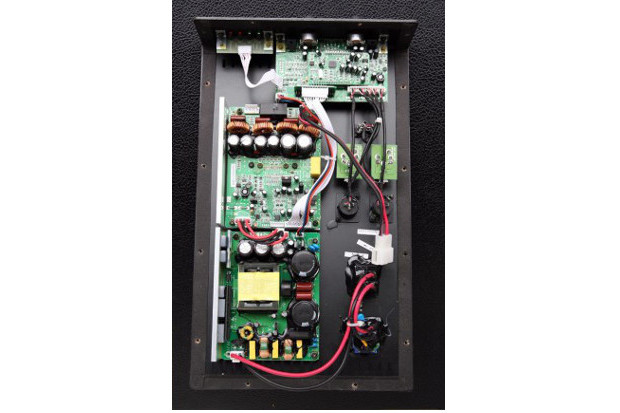
Removing the sturdy front grille reveals the two bass speakers arranged in a “V” configuration. Digital signal processing (DSP) with limiter, equalizer, compressor, and crossover functions provides for clarity and the powerful sound of the overall system.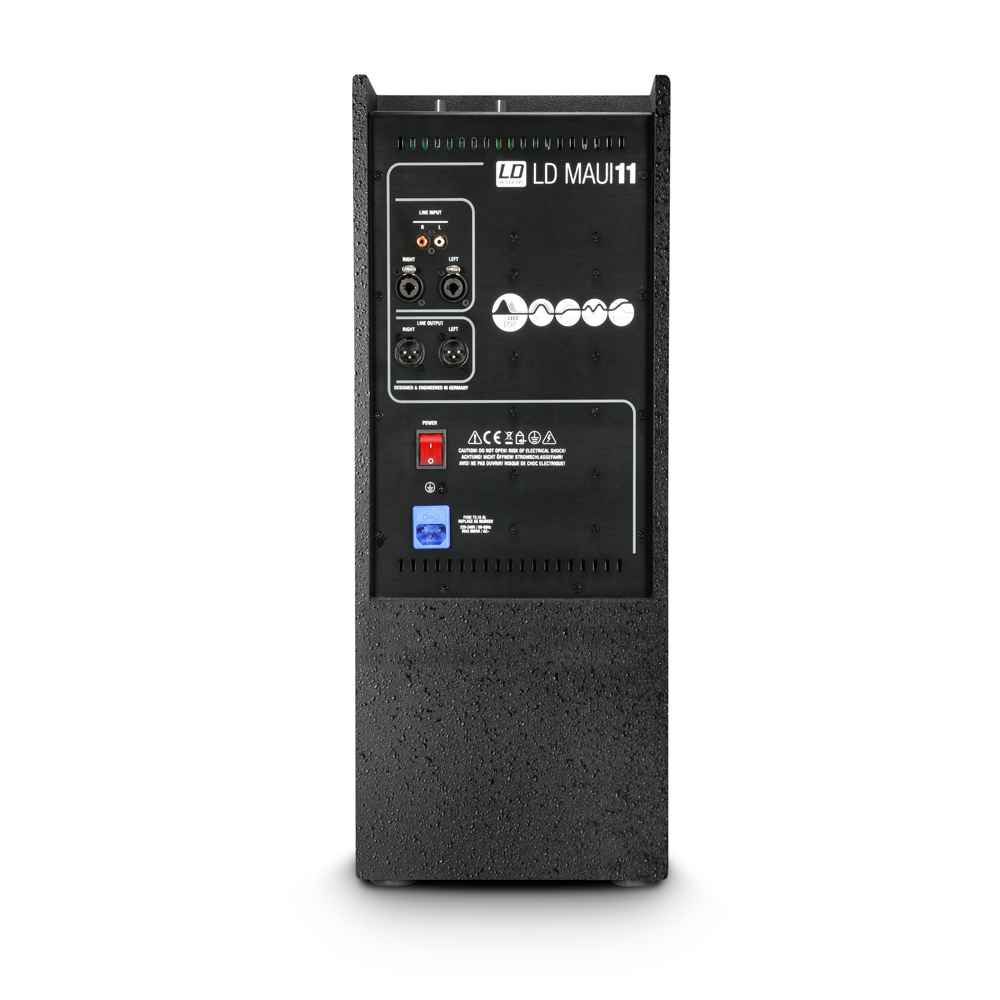
The indicator lamps are also visible from above, which is very practical. They keep you informed about the switching status (On), connected audio signal, limiter, and protection circuit (Protect). All other connections are located on the rear panel of the subwoofer. There we find the illuminated mains switch, a lockable power connector, and of course the input and output sockets. Two XLR/TRS combo sockets serve as line inputs; in addition, there are two RCA inputs. The input signals are routed via two XLR outputs. There are no fans or cooling fins. Instead, small slits at the top and bottom of the panel provide the necessary air circulation.
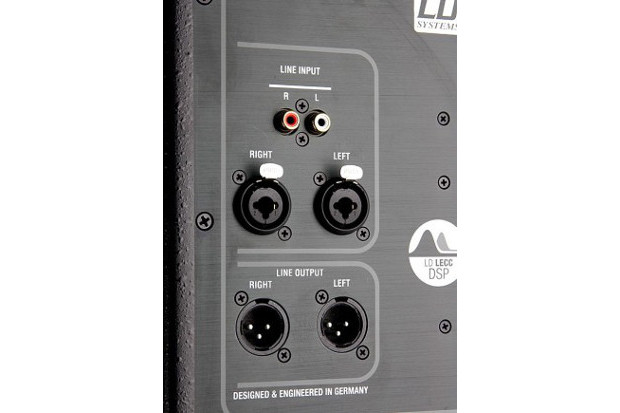
Connected The setup is done in a matter of seconds. You can’t go wrong here – put the two elements together and off you go. She stands there elegantly, the MAUI 11.
The power amp inputs are line-level inputs. For this reason, you can’t connect dynamic microphones to them directly. That requires a mixer or a preamp. But first I grab some Kenny Wayne Shepherd from my CD collection. An older CD entitled Ledbetter Heights from 1995. Stratocaster sounds in the style of Stevie Ray Vaughan jump out at me. The sometimes lengthy guitar riffs with a feeling of blues and a touch of soul sound outstanding. It’s not until you back away from the “MAUI” a little, however, that the sound detaches itself accordingly and melts into a unified whole. Approximately four to five metres and it feels right. If you stand too close to the column, the tweeter is extremely noticeable. It is astounding how much rich bass response the two “V” speakers can produce. Depending on the sound material, you might need to tweak the bass controller a little, so as not to have too much of a good thing.
Finally, I tried my SM58. Via a small mixer, the signal is amplified and feeds directly into the MAUI 11 without tone control. Again, there are no surprises, the sound is great. Without frills, the sound column does a good job; the voice sounds natural. The whole is rounded off by the subwoofer, which is less prominent at this point.
Whether using pre-recorded music or a mike, the sound fills the room well. The advantages offered by this type of system (line array) are apparent here. Once again, it is the wide dispersion, but also the so-called cylinder shaft, that sets it apart with space-filling sound and low volume drop in the far reaches of the room. You get the impression that it sounds equally good almost everywhere. Although in this test, only a single MAUI 11 is connected. The overall volume is adequate. A system output of 340 watts RMS is plenty for many applications.
Pros
design
sound
system advantages (line sources)
weight
value for money
Minus
–
Complete product information is available here:
http://www.ld-systems.com/en/series/maui-series/maui-11-compact-column-pa-system-active/
Source: http://www.amazona.de/test-ld-systems-maui-11-aktives-saeulen-pa-system/
Author: Peter Ludl
Leave a Comment
You must be logged in to post a comment.












